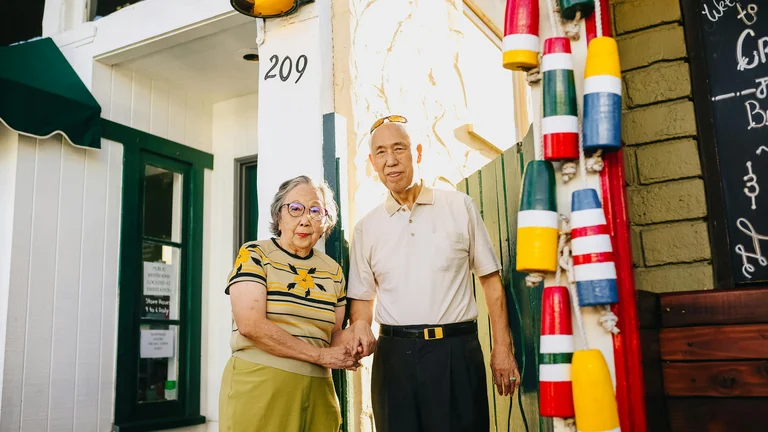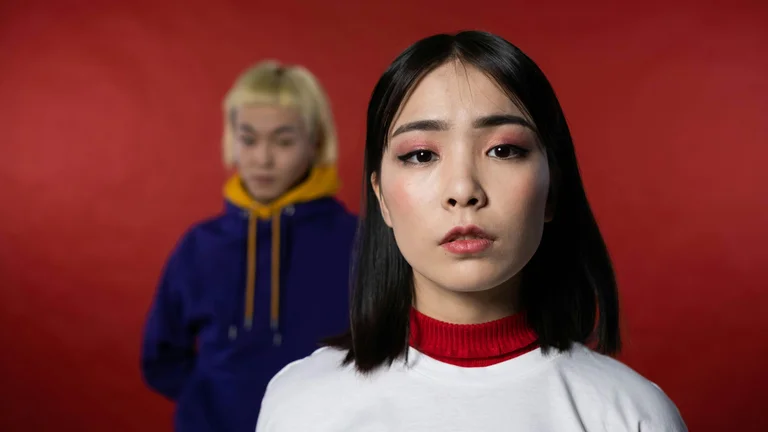Understanding the Essence of Contract Relationship Plots in K-Dramas

The concept of a "contract relationship" in K-Dramas serves as a compelling narrative device that generates tension, emotional depth, and complex character arcs. This trope usually involves two characters entering a formalized agreement to mimic a romantic relationship for a stipulated period or purpose, only for genuine feelings to develop later. Its appeal lies in the rollercoaster of emotions stemming from a relationship that starts as superficial and transactional, evolving into authentic connection through layers of conflict, vulnerability, and gradual trust building.
At the core, contract relationships blend external obligation with internal change. Many viewers resonate with the duality of characters bound by societal or personal contracts yet struggling to reconcile the contract’s confines with their growing emotions. The beauty of this plot lies in how writers manipulate traditional romance progression, replacing initial sparks or fate with forced proximity and mutual benefit. This distinction sets the stage for unique character development and unpredictable storytelling.
Notably, the contract relationship trope leverages classic romantic comedy elements seen through a more structured, almost corporate lens. The formal agreement mandates interactions, creating opportunities for comical misunderstandings, forced intimacy, and gradual softening of initially guarded personalities. The characters’ evolving dynamic often mirrors human experiences around boundaries, promises, and expectations in relationships, albeit framed through a dramatic lens.
The genre's evolution has showcased different variations of contract relationships beyond romantic comedy, spanning melodrama, fantasy, and workplace romance, each adapting the core premise to fit diverse cultural and narrative needs. This adaptability ensures the trope remains fresh and engaging for broad audiences.
Key Components Defining Perfect Contract Relationship Plots
Perfect contract relationship plots adhere to several critical components that ensure engagement and narrative cohesion. These elements, when meticulously crafted, escalate tension and create a satisfying payoff for viewers.
Firstly, the impetus for the contract is essential. It serves as a believable catalyst driving the characters into an artificial relationship. Common motivations include career advancement, familial pressure, social expectations, financial necessity, or personal protection. The premise needs to be compelling and relatable enough to suspend disbelief and justify the contract’s existence within the story’s universe.
This foundation leads to the necessity of clear, detailed contract terms within the plot. Writers often depict explicit clauses outlining behavior, duration, boundaries, and consequences for breaches. These rules establish stakes and often act as sources of conflict when characters bend or break them, emphasizing risk and personal growth.
Character contrasts form another vital element. Typically, the protagonists possess opposing personalities, social statuses, or worldviews, creating friction and chemistry. For instance, one might be cold and methodical, and the other warm and spontaneous. The contract relationship forces interaction between these differences, driving narrative momentum through conflict resolution, humor, and emotional revelation.
Furthermore, gradual emotional transition is key. Showing characters cross the divide from calculated partners to genuine lovers with subtle moments builds authenticity. This progression involves an intricate balance of vulnerability, misunderstanding, jealousy, and support that feels earned rather than contrived.
Lastly, an effective resolution respects the contract’s initial constraints while delivering emotional payoff. The dissolution or transformation of the contract should mark a turning point where characters’ autonomy and feelings triumph over the superficial agreement.
Common Motifs and Narrative Strategies in Contract Relationship K-Dramas
Contract relationship K-Dramas utilize identifiable motifs and storytelling strategies that have become signature elements, helping writers shape audience expectations while delivering fresh twists.
One popular motif is the “fake dating” premise—a pact to pretend dating to appease an overbearing family member or win a company competition. This setup creates high-stakes tension as characters navigate societal scrutiny and personal embarrassment. The constant awareness of being observed heightened stakes and adds comedic layers.
Another frequent trope is the "cohabitation clause," which forces characters to live under the same roof. The intimacy of shared spaces catalyzes reluctant bonding and facilitates character exploration through domestic interactions, shared rituals, and conflicts arising from differing habits. Household scenes often serve as the backdrop for character growth and humor.
The incorporation of career-related contracts is also prevalent. Characters may agree to act as a couple to secure business deals, promotions, or maintain public images. This setting opens discussion of workplace dynamics, gender roles, and societal expectations, adding layers to the relationship’s facade-versus-reality conflict.
Additionally, the trope of the "protective contract" where one character assumes guardianship or contractual protection over the other often appears in melodramatic contexts. These plots delve into emotional trauma, trust rebuilding, and healing through structured yet vulnerable relationships established by necessity rather than desire.
Some K-Dramas introduce supernatural or fantasy elements into contract relationships, such as contracts with time limits linked to curses or magical binds. These variations enhance dramatic urgency and allegorical representation of emotional entrapment and liberation.
Detailed Case Studies of Notable K-Dramas Featuring Contract Relationships
An in-depth look at several acclaimed dramas reveals diverse implementations of the contract relationship trope and why they succeed.
1. "Full House" (2004): A pioneering series that popularized the contract relationship trope internationally. The plot revolves around a struggling writer and a top actor entering a contract marriage to protect property rights. The detailed contract terms establish clear boundaries, but the daily cohabitation and clashing personalities yield comedic situations and gradual affection. The drama’s success stemmed from well-rounded characters, credible motivations, and a balanced blend of humor and romance.
2. "Because This Is My First Life" (2017): This drama innovatively explores a contract marriage born out of practical financial convenience rather than romantic impulse. It offers deep social commentary on societal pressures around marriage, gender roles, and personal agency. The slow-burning relationship is grounded in realism, with complex characters negotiating boundaries and emotional needs. Its nuanced writing elevates the standard contract relationship plot into a mature exploration of intimacy and independence.
3. "What's Wrong with Secretary Kim" (2018): This drama pivots around the high-powered company president and his loyal secretary entering a contract-like façade to manage workplace rumors and internal dynamics. The implied contract is less formal but evident in the power dynamics and mutual dependence. The contrast between the cold CEO and spirited secretary added charm, with a blend of wit, heartfelt moments, and character transformation anchored by the forced-but-loving relationship facade.
4. "So I Married an Anti-Fan" (2021): This drama employs the contract relationship trope with the twist of celebrity culture and media scrutiny. The contract begins as a professional arrangement for image management but evolves through genuine emotional conflict, misunderstandings, and vulnerability. The layered depiction of the public versus private selves enriches the contract interaction, making viewers question authenticity in relationships shaped by external pressures.
Common Challenges and Pitfalls in Writing Contract Relationship Narratives
While contract relationships are compelling, executing them effectively requires careful attention to avoid common pitfalls. One major challenge is balancing believability with dramatic tension. If the contract premise feels too contrived or flimsy, viewers’ suspension of disbelief breaks, nullifying emotional investment. Writers must craft motivations and terms that resonate with real-life pressures or relatable stakes.
Another potential issue is the risk of repetitive or formulaic storytelling. Since the trope is widely used, fresh perspectives are essential to prevent redundancy. Over-reliance on clichés, such as instantly falling in love or abrupt contract breakups without exploring emotional nuances, will disillusion engaged viewers seeking depth.
Also, underdeveloped supporting characters and side plots can weaken the primary contract narrative. Every contract relationship series benefits from layered subplots that reflect or contrast the main theme, enriching the drama's texture and avoiding monotony in the main storyline.
Furthermore, pacing is critical. The gradual transition from a transactional relationship to an emotional one must feel earned. Rushing love declarations or oversimplifying conflicts can trivialize complexities of human connection that make these plots compelling.
Lastly, sensitivity towards gender dynamics and cultural context matters. Contract relationship plots sometimes risk reinforcing stereotypes or power imbalances. Thoughtful writing that questions or subverts traditional roles adds sophistication and relatability.
Integrated Table: Comparison of Popular K-Dramas Featuring Contract Relationships
| Drama Title | Contract Motivation | Main Characters' Dynamic | Genre | Unique Element |
|---|---|---|---|---|
| Full House (2004) | Property protection and family conflict | Actress - Celebrity; opposites attract | Romantic Comedy | Classic contract marriage with comedic situations |
| Because This Is My First Life (2017) | Financial convenience and social commentary | Introverted writer - free-spirited woman | Romantic Slice-of-life | Realistic portrayal of marriage and independence |
| What's Wrong with Secretary Kim (2018) | Workplace rumors and power dynamics | CEO - Loyal secretary | Romantic Comedy | Focus on workplace dynamics and personal growth |
| So I Married an Anti-Fan (2021) | Image management in celebrity culture | Pop star - Journalist | Romantic Drama | Celebrities’ public vs. private self conflict |
Step-by-Step Guide to Crafting an Engaging Contract Relationship Plot
Creating a memorable contract relationship in a K-Drama requires more than just a premise. Writers must follow a detailed process to ensure emotional resonance and narrative strength.
- Establish a Believable Catalyst: Begin with a natural and understandable reason compelling the characters to enter a contract. Avoid overly convoluted or forced motivations.
- Define Clear Contract Terms: Outline the contract's scope within the story: duration, obligations, limitations, and consequences. These elements create narrative tension and conflict.
- Develop Distinct, Contrasting Characters: Build characters whose personalities and backgrounds clash yet complement, providing room for growth and chemistry.
- Introduce Obstacles and Misunderstandings: Include scenarios where contract terms are challenged, secrets are revealed, and personal feelings conflict with the agreement.
- Showcase Gradual Emotional Evolution: Use subtle moments and dialogues to transition characters from transactional partners to emotionally invested individuals.
- Balance Humor and Drama: Maintain a tone that can pivot between lighthearted scenes—often involving awkward contract-related situations—and serious emotional confrontations.
- Utilize Supporting Characters Strategically: Create side plots and secondary characters that reflect or challenge the main relationship, adding depth.
- Craft a Resolution Honoring Both Contract and Emotion: Decide how the contract ends—whether through mutual understanding, dissolution, or transformation—and ensure it aligns with the characters’ journey.
List of Essential Tips for Writers Working on Contract Relationship Plots
- Root the contract motivation in genuine, relatable conflict or necessity.
- Avoid clichés by adding unexpected twists to contract terms or consequences.
- Use the contract as a metaphor for emotional boundaries and trust.
- Prioritize character development over plot mechanics for genuine emotional payoffs.
- Use dialogue to reveal inner conflicts related to the artificial relationship.
- Experiment with setting and genres to refresh the trope’s presentation.
- Show, don’t just tell, the shift from obligation to affection through interactions.
- Maintain consistent tension by gradually raising stakes rather than sudden changes.
In-Depth Psychological Analysis of Contract Relationships Themes
The appeal of contract relationship K-Dramas is intertwined with psychological concepts surrounding attachment, interpersonal dynamics, and social roles. These stories often mirror real-life emotional experiences, making them particularly resonant.
From a psychological perspective, the contract represents a system of imposed boundaries and structured expectations that challenge the characters’ need for autonomy and connection. The tension between obligation and desire reflects intrinsic human conflicts around vulnerability and control.
Furthermore, the slow development of genuine affection within the framework of a contract echoes attachment theory. Characters often start with avoidant or distant behaviors, guarded by the contract’s rules, then gradually transition toward secure attachment as they confront fears, insecurities, and past traumas.
Such narratives also explore social psychology aspects like impression management and role-playing. Characters consciously perform roles dictated by the contract in public and social settings, which forces introspection about their authentic selves and desires.
The artificial nature of the contract also creates cognitive dissonance, where characters must reconcile their contractual obligations with emotional impulses, leading to compelling internal and interpersonal conflict. This tension drives character growth and viewer investment.
Applications and Influence of Contract Relationship Plots Beyond K-Drama
The popularity of contract relationships in K-Dramas has influenced storytelling across multiple media forms globally. Numerous television shows, novels, and movies outside Korea have adopted similar plot constructs because of their proven emotional appeal and dramatic versatility.
In literature, especially romance novels, contract or fake relationships have become a common trope, often drawing inspiration from successful K-Drama narratives. The structured agreement concept provides a reliable framework for exploring complex character relationships within a bounded timeline or set of conditions.
Television shows in other countries sometimes adapt K-Drama plots, incorporating cultural nuances while maintaining the central theme of contract relationships. These adaptations highlight the universal relevance of exploring relational boundaries forged under obligation.
Moreover, the trope has extended into reality TV and social media, where themes of fake dating or staged relationships play out in curated content to generate engagement and explore social perceptions of romance and authenticity.
On a behavioral level, the fascination with contract relationships taps into societal conversations about modern relationships balancing personal freedom and societal or familial expectations. This dynamic speaks to contemporary audiences worldwide who navigate complex relational landscapes themselves.
FAQ - Perfect K-Drama “Contract Relationship” Plots
What defines a contract relationship plot in K-Dramas?
A contract relationship plot centers on two characters who enter a formal or informal agreement to act as a couple, usually for mutual benefit or external reasons, eventually developing real emotional bonds.
Why are contract relationship plots so popular in K-Dramas?
They offer a unique blend of conflict, comedic situations, and emotional growth, exploring themes of obligation versus desire, which creates compelling narratives and relatable characters.
How do writers keep contract relationship plots fresh and engaging?
By varying motivations, exploring realistic character development, subverting clichés, introducing socio-cultural themes, and balancing humor with drama, writers maintain originality and depth.
Can contract relationship plots work outside romantic comedy genres?
Yes, they adapt well to melodrama, workplace romance, fantasy, and even darker themes by adjusting the contract’s nature and the characters’ motivations to fit the genre.
What psychological themes are typically explored in contract relationship K-Dramas?
These plots often explore attachment styles, boundaries, trust development, role-playing, cognitive dissonance, and the tension between authenticity and performance in relationships.
Are contract relationships only a Korean drama trope?
While very popular in K-Dramas, similar contract or fake relationship tropes appear globally in various media, reflecting universal human experiences with relationships under constraints.
What are common mistakes to avoid when writing contract relationship plots?
Avoid contrived motivations, rushed emotional transitions, predictable clichés, underdeveloped side characters, and failure to balance emotional depth with plot mechanics.
Contract relationship plots in K-Dramas uniquely combine formal agreements with evolving personal emotions, creating compelling narratives that explore boundaries, trust, and authenticity. Their structured yet dynamic nature ensures engaging character development and emotional depth, making this trope a favored storytelling choice that resonates globally.
Contract relationship plots remain a powerful and versatile narrative device in K-Dramas, offering rich soil for character exploration and emotional complexity. By blending contractual obligation with emerging affection, these stories reflect deep human conflicts and desires. Meticulous attention to believable motives, nuanced character development, and gradual emotional shifts ensure these plots continue to captivate audiences, evolving with the times and cultural contexts. Their influence spans genres and media, showcasing their enduring relevance and appeal.






